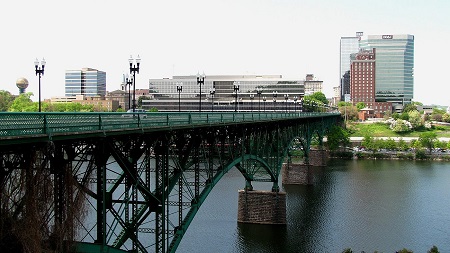Nestled in the heart of Nashville, Tennessee, Gay Street and the Cumberland River present a captivating blend of history, culture, and natural beauty. Whether you’re a local or a visitor, this area offers a variety of experiences that capture the essence of Music City.
A Stroll Down Gay Street
Gay Street is one of Nashville’s most storied avenues, with roots stretching back to the early 19th century. Originally known for its vibrant commercial activity, today Gay Street remains a focal point of the city’s historic charm and modern dynamism.
Historic Significance: Gay Street has witnessed the evolution of Nashville from a burgeoning frontier town to a cultural hub. The architecture along this street reflects different periods of Nashville’s history, from the late 1800s to contemporary times. Buildings such as the historic Ryman Auditorium, known as the “Mother Church of Country Music,” are just a stone’s throw away, offering a rich historical backdrop.
Cultural Hotspots: The street is lined with a variety of shops, restaurants, and galleries. From unique boutique stores to local eateries serving up Southern delicacies, Gay Street is a testament to Nashville’s thriving arts and food scene. Noteworthy spots include the Schermerhorn Symphony Center, which offers a wide range of musical performances, and the Johnny Cash Museum, celebrating the legacy of one of country music’s most iconic figures.
The Cumberland River: Nashville’s Lifeline

Flowing gracefully through the city, the Cumberland River is integral to Nashville’s geography and economy. It has been a crucial waterway since the city’s founding, serving as a transportation route and a source of natural beauty.
Recreational Activities: The river provides ample opportunities for outdoor enthusiasts. Popular activities include kayaking, paddle boarding, and riverboat tours, which offer unique perspectives of Nashville’s skyline and landmarks. The Cumberland River Greenway, a scenic pathway that runs along the river, is perfect for jogging, cycling, or simply enjoying a leisurely walk.
Historical Context: The Cumberland River has played a significant role in Nashville’s development. During the Civil War, it was a strategic military asset. Today, it continues to be vital for the city’s commerce and is a popular spot for community events, such as riverfront concerts and festivals.
Connecting Gay Street and the Cumberland River
The proximity of Gay Street to the Cumberland River makes exploring these two attractions a seamless experience. You can easily spend a day wandering through the historic streets of Gay Street and then enjoy the river’s serene environment. A visit to the John Seigenthaler Pedestrian Bridge, which spans the Cumberland River, provides stunning views of both the river and the Nashville skyline.
Tips for Visiting
- Best Time to Visit: Spring and fall offer mild weather and beautiful scenery. The riverbanks are particularly picturesque during these seasons.
- Parking: There are several parking options available, including metered street parking and parking garages around Gay Street and the riverfront.
- What to Wear: Comfortable walking shoes are a must, as you’ll want to explore both the street and the riverfront. Depending on the season, bring layers and a water bottle to stay hydrated.
Conclusion
Gay Street and the Cumberland River together offer a rich tapestry of Nashville’s heritage and natural beauty. Whether you’re interested in exploring historical sites, enjoying local cuisine, or taking in scenic river views, this area provides a memorable experience. So, lace up your walking shoes and immerse yourself in the vibrant culture and picturesque landscapes that make Nashville truly special.
By highlighting the unique attributes and experiences associated with Gay Street and the Cumberland River, this article aims to guide visitors and locals alike to explore and appreciate one of Nashville’s most cherished areas.
